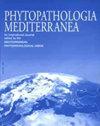地中海富氏孢子虫。历史上的埃斯卡剂:全面回顾了欧洲主要的葡萄藤木腐剂
IF 1.9
3区 农林科学
Q2 AGRONOMY
引用次数: 21
摘要
地中海富氏孢子虫。(Fmed)是一种担子菌,于2002年首次被发现,当时被认为是点状孢子虫(P. Karst) Murrill的一部分。这种真菌可以降解木质纤维素生物质,引起白腐病并留下漂白的纤维寄主残留物。在欧洲,Fmed被认为是Esca病复合体中的主要葡萄藤木腐病(Esca)剂,其中包括一些经济上最重要的葡萄藤树干病(gtd)。本文综述和评价了已发表的关于Fmed、通过刮除或用特定产品处理患病葡萄来消除白腐病的研究,以及Esca病群中木材症状与葡萄叶条病(GLSD)之间关系的研究。此外,还综述了真菌生物学、致病性机制及其与Esca病复合体外部叶面症状的可能关系。还审查了关于Fmed控制战略的信息。本文章由计算机程序翻译,如有差异,请以英文原文为准。
Fomitiporia mediterranea M. Fisch., the historical Esca agent: a comprehensive review on the main grapevine wood rot agent in Europe
Fomitiporia mediterranea M. Fisch. (Fmed) is a basidiomycete first described in 2002, and was considered up to then as part of Fomitiporia punctata (P. Karst) Murrill. This fungus can degrade lignocellulosic biomass, causing white rot and leaving bleached fibrous host residues. In Europe Fmed is considered the main grapevine wood rot (Esca) agent within the Esca disease complex, which includes some of the most economically important Grapevine Trunk Diseases (GTDs). This review summarises and evaluates published research on Fmed, on white rot elimination by curettage or management by treatments with specific products applied to diseased grapevines, and on the relationship between wood symptoms and Grapevine Leaf Stripe Disease (GLSD) in the Esca disease complex. Information is also reviewed on the fungus biology, mechanisms of pathogenicity, and their possible relationships with external foliar symptoms of the Esca disease complex. Information on Fmed control strategies is also reviewed.
求助全文
通过发布文献求助,成功后即可免费获取论文全文。
去求助
来源期刊

Phytopathologia Mediterranea
生物-植物科学
CiteScore
4.40
自引率
8.30%
发文量
28
审稿时长
6-12 weeks
期刊介绍:
Phytopathologia Mediterranea is an international journal edited by the Mediterranean Phytopathological Union. The journal’s mission is the promotion of plant health for Mediterranean crops, climate and regions, safe food production, and the transfer of new knowledge on plant diseases and their sustainable management.
The journal deals with all areas of plant pathology, including etiology, epidemiology, disease control, biochemical and physiological aspects, and utilization of molecular technologies. All types of plant pathogens are covered, including fungi, oomycetes, nematodes, protozoa, bacteria, phytoplasmas, viruses, and viroids. The journal also gives a special attention to research on mycotoxins, biological and integrated management of plant diseases, and the use of natural substances in disease and weed control. The journal focuses on pathology of Mediterranean crops grown throughout the world.
The Editorial Board of Phytopathologia Mediterranea has recently been reorganised, under two Editors-in-Chief and with an increased number of editors.
 求助内容:
求助内容: 应助结果提醒方式:
应助结果提醒方式:


